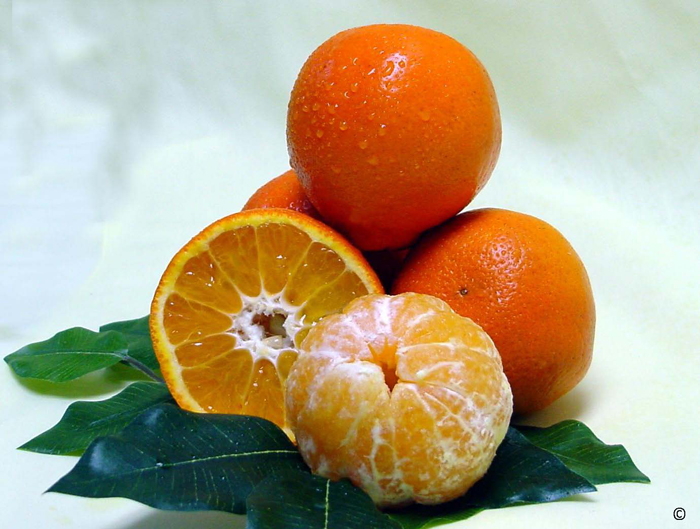
by Mary Salinas | Nov 22, 2021
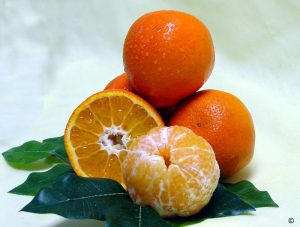
Sugar Belle mandarin cultivar. Mix of sweet Clementine and Minneola varieties. UF/IFAS File Photo.
Florida is known for citrus and many homeowners love to grow and enjoy it. However, a devastating disease known as citrus greening or HLB has taken a toll on commercial and residential citrus since it first was discovered in Florida in 2005.
Sugar Belle is a cultivar of mandarin citrus developed by the University of Florida citrus geniuses and is tolerant of citrus greening disease if it is properly planted and cared for. Tolerance of the disease does not mean that it doesn’t get citrus greening, rather it means that this cultivar can get infected but still be healthy and productive. The fruit of infected trees is safe to eat as the bacterium that causes it does no harm to humans.
Our chilly winters can be detrimental to many kinds of citrus, but Sugar Belle can withstand temperatures down to 14°F once the tree is well established. That is good news for us in the panhandle. Even so, it is best to choose a spot in your landscape with a southern exposure, preferably with a wind block from northwest winds. Avoid low areas as cooler air falls into those areas.
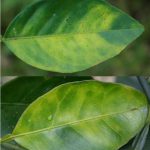
Symptoms of citrus greening on leaves show a blotchy mottled pattern. UF/IFAS photo.
Make your purchase from a certified nursery to make sure you are getting the right cultivar and a disease-free tree. Spring and fall are the best seasons of the year to plant citrus. When planting, make sure to make slices in the rootball if it is rootbound or if circling roots are present. The rootball should be slightly above the ground level after planting. All weeds and grass should be removed under the canopy of the tree to as they compete for water and nutrients with your newly planted tree. Never place mulch against the trunk as it can hold moisture there and promote disease. Water often the first year until well-established; after establishment citrus has some drought tolerance and may only need supplemental irrigation in times of heat and drought.
A good quality citrus fertilizer with micronutrients is crucial for a healthy tree with good quality fruit. The first fertilization should be about 3 weeks after planting and then follow the label directions for subsequent fertilizations. Newly planted trees should be fertilized 6 times in the first year and the fertilizer should be evenly broadcast under the tree canopy.
The only pruning in the first 3 years should be the removal of suckers that grow from the base, water shoots that grow quickly and straight up, and dead wood. Be sure to clean your pruning tools before and after each tree to avoid spreading any possible disease. First rinse off any dirt or other organic matter and then use a 3% bleach solution or alcohol for sterilization.
Happy Gardening!
For more information:
UF/IFAS Research on Development of Sugar Belle YouTube
Citrus Culture in the Home Landscape
Citrus Greening
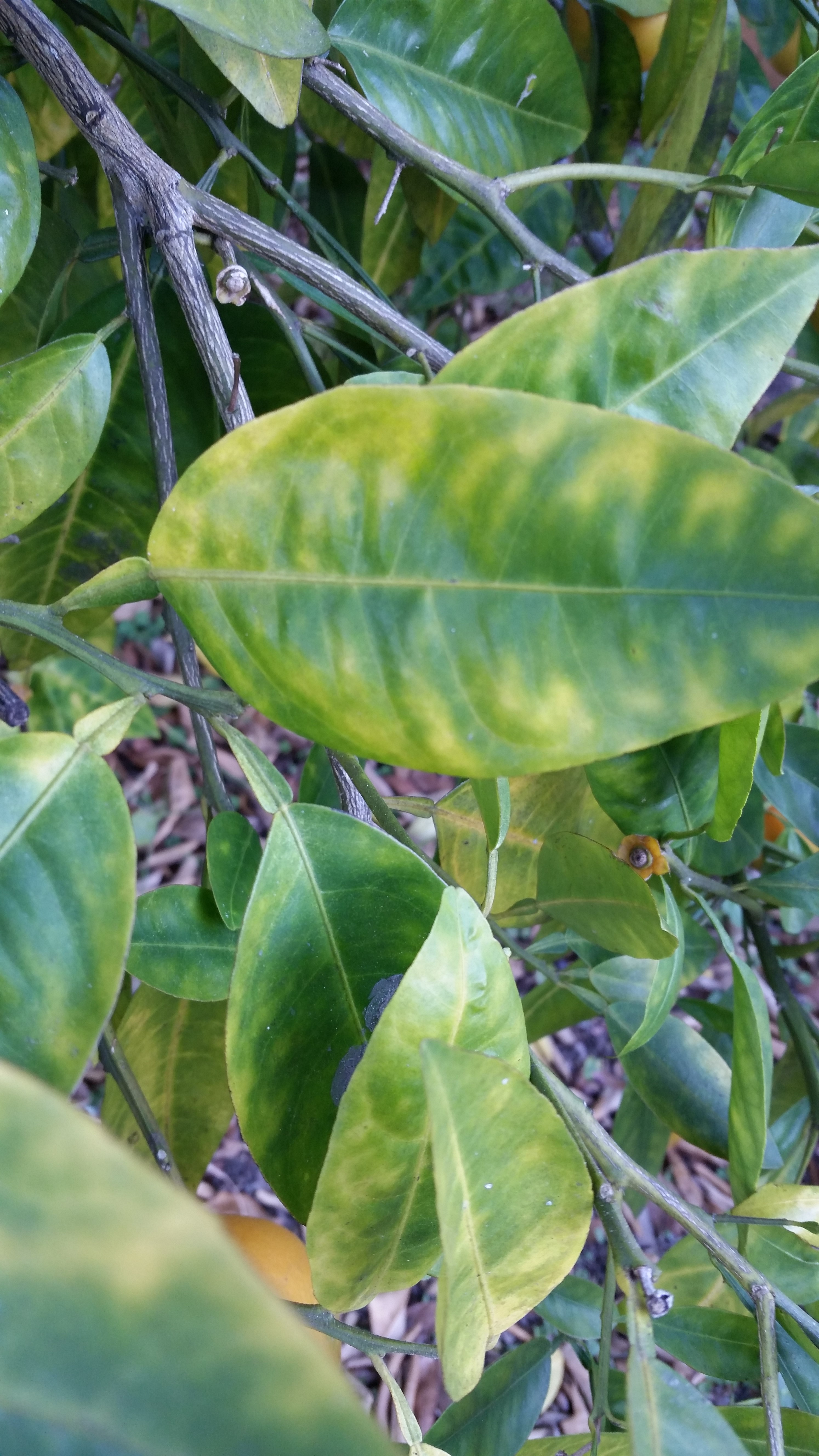
by Carrie Stevenson | Mar 2, 2017
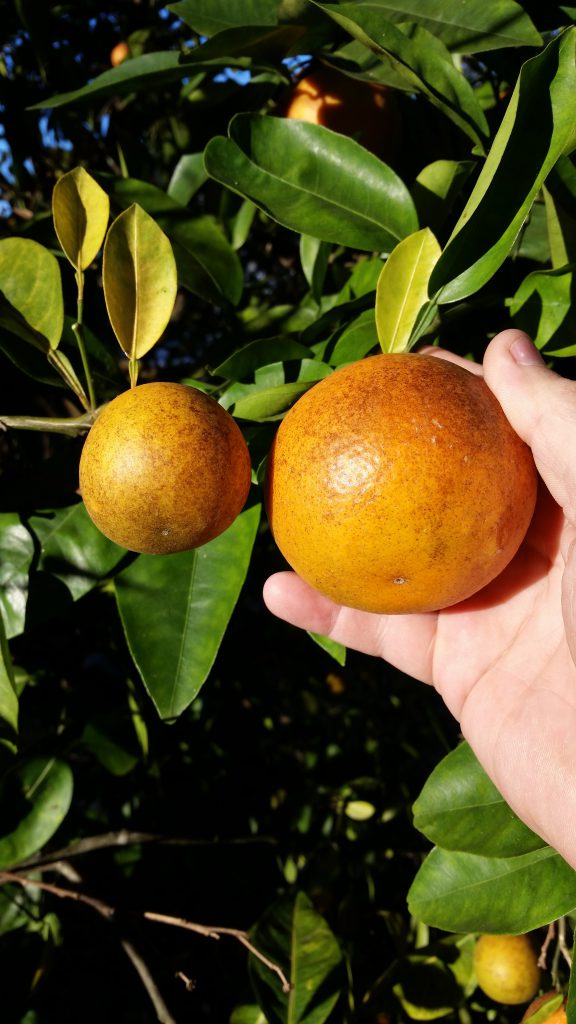
Small Fruit vs Normal
If we look at the big picture when it comes to invasive species, some of the smallest organisms on the planet should pop right into focus. A microscopic bacterium named Candidatus Liberibacter asiaticus, the cause of Citrus Greening (HLB), has devastated the citrus industry worldwide. This tiny creature lives and multiplies within the phloem tissue of susceptible plants. From the leaves to the roots, damage is caused by an interruption in the flow of food produced through photosynthesis. Infected trees show a significant reduction in root mass even before the canopy thins dramatically. The leaves eventually exhibit a blotchy, yellow mottle that usually looks different from the more symmetrical chlorotic pattern caused by soil nutrient deficiencies.
One of the primary vectors for the spread of HLB is an insect called the Asian citrus psyllid. These insects feed by sucking juices from the plant tissues and can then transfer bacteria from one tree to another. HLB has been spread through the use of infected bud wood during grafting operations also. One of the challenges with battling this invasive bacterium is that plants don’t generally show noticeable symptoms for perhaps 3 years or even longer. As you would guess, if the psyllids are present they will be spreading the disease during this time. Strategies to combat the impacts of this industry-crippling disease have involved spraying to reduce the psyllid population, actual tree removal and replacement with healthy trees, and cooperative efforts between growers in citrus producing areas. You can imagine that if you were trying to manage this issue and your neighbor grower was not, long-term effectiveness of your efforts would be much diminished. Production costs to fight citrus greening in Florida have increased by 107% over the past 10 years and 20% of the citrus producing land in the state has been abandoned for citrus.
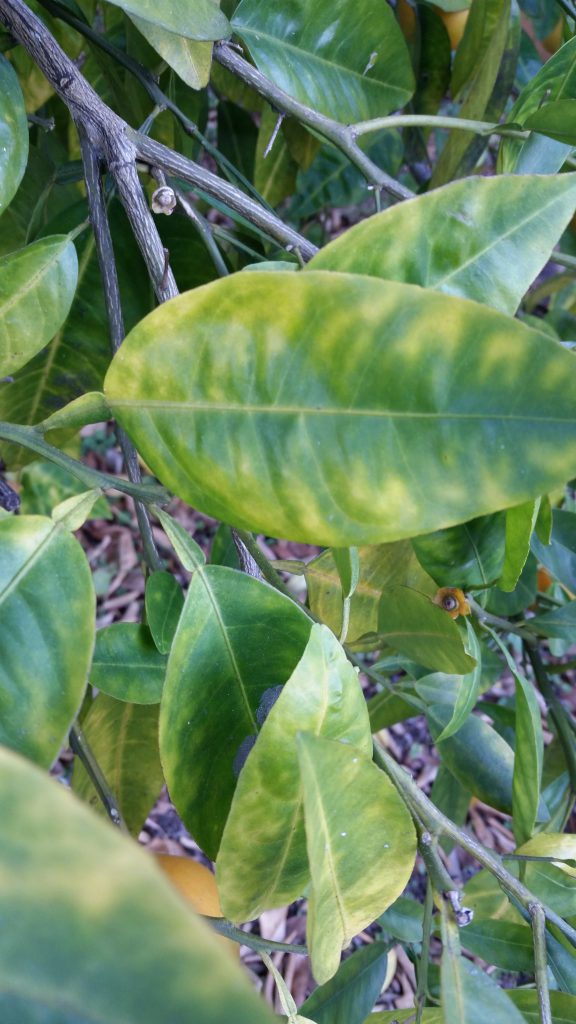
Classic blotchy mottle in Leaves
Many scientists and citrus lovers had hopes at one time that the Florida Panhandle would be protected by our cooler climate, but HLB has now been confirmed in more than one location in backyard trees in Franklin County. The presence of an established population of psyllids has yet to be determined, as there is a possibility infected trees were brought in.
A team of plant pathologists, entomologists, and horticulturists at the University of Florida’s centers in Quincy and Lake Alfred and extension agents in the panhandle are now considering this new finding of HLB to help devise the most effective management strategies to combat this tiny invader in North Florida. With no silver-bullet-cure in sight, cooperative efforts by those affected are the best management practice for all concerned. Vigilance is also important. If you want to learn more about HLB and other invasive species contact your local UF/IFAS Extension office.
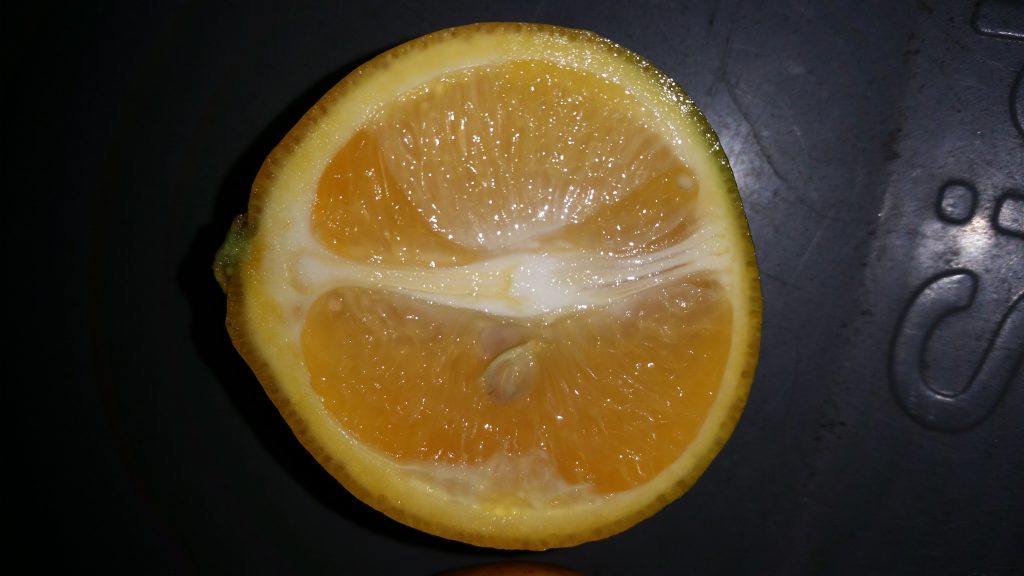
Asymmetrical Fruit
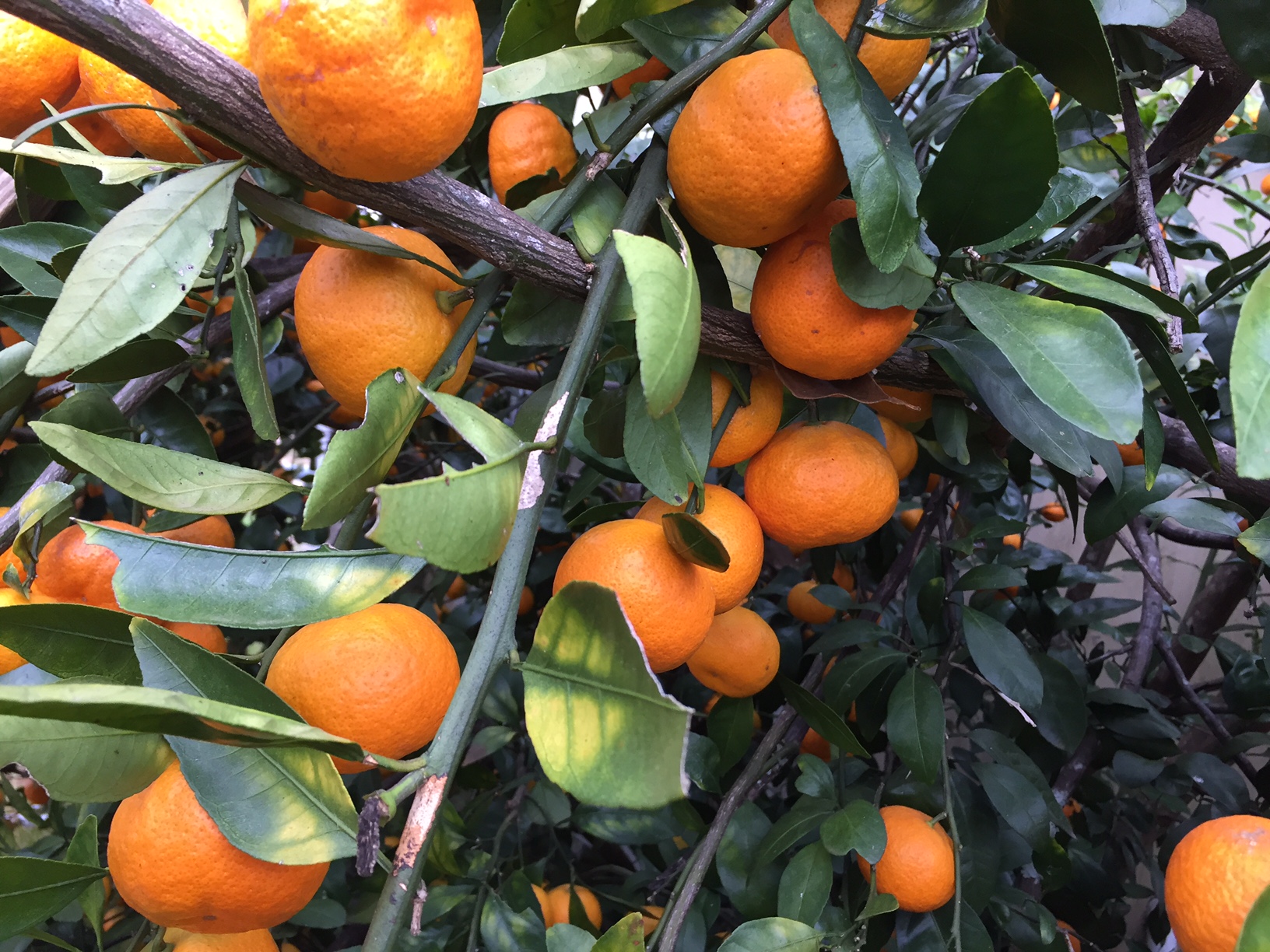
Typical nutrient deficiencies observed in leaf, on trees with heavy fruit load. Not related to Citrus Greening (HLB)
Article by: Erik Lovestrand, UF/IFAS Franklin County Extension Director/Florida Sea Grant Agent








